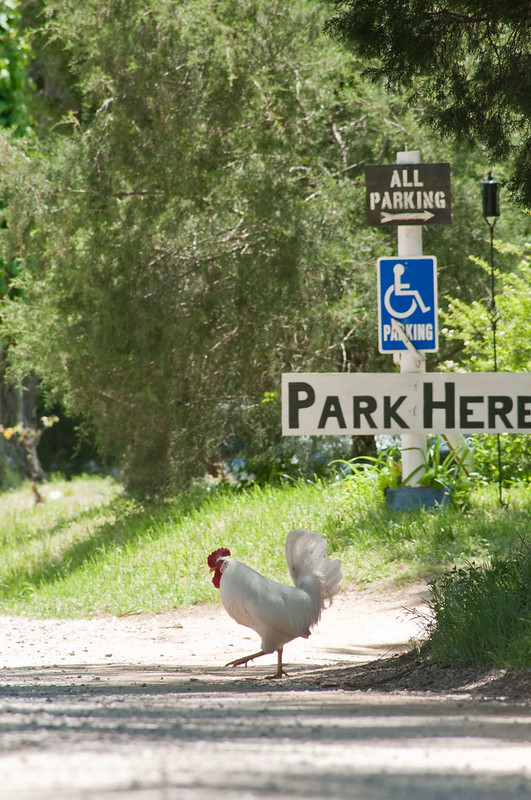We must reconnect nature to save nature
The chicken crossed the road because that road divided its habitat into tiny fragments, threatening its existence by giving it less livable land and therefore stacking the odds against its survival.

Photo: One of Colorado’s first wildlife overpasses, this one is on Colorado State Highway 9 in Grand County. Jeffrey Beall via Flickr CC BY-SA 2.0
Everyone knows the joke with a punchline so mundane that it elicits not even a pity laugh: Why did the chicken cross the road? To get to the other side, of course. Simple and to the point, but little did we know that the chicken can actually tell us a lot about conservation.
You see, the chicken is acutely aware of a problem that plagues many species across the country. The chicken crossed the road because that road divided its habitat into tiny fragments, threatening its existence by giving it less livable land and therefore stacking the odds against its survival.

Okay, this doesn’t exactly apply to chickens, but this fragmentation is certainly relevant to a number of other, more threatened species across the country. For species with smaller, more spread out habitats, large-scale movement and genetic exchange becomes stifled, reducing a species’ biological fitness and making it considerably more vulnerable to disease and other existential threats.
It’s not just roads that are causing these problems. Fences, dams, and other products of human development have also split up animal populations into distinct areas. This means that animals like moose and bears must cross highways to reach other habitats, endangering not only themselves but us, too. Vehicular crashes with large animals like these can be incredibly dangerous — even fatal — both to humans and animals, and there are 21 species across the country whose very existence is threatened by road mortalities.
The solution to this issue is simple yet innovative and effective: reconnect fragmented habitats. The bipartisan infrastructure does just that by providing $350 million over five years to construct wildlife crossings, which connect small and isolated habitats with one another. These crossings can be built above and below highways to allow for the safe passage of these creatures between habitats.
Additionally, the Build Back Better Act in Congress would provide nearly $10 million for all sorts of wildlife corridors, not just crossings over and under roads. Our recent report, Reconnecting Nature, laid out some of these corridors, ranging from connecting lands in the Northeast from New York to Quebec, to bird and butterfly stopover habitat in Chicago for flyers worn weary from crossing Lake Michigan. The examples of wildlife corridors abound.
For example, a series of overpasses and underpasses on State Highway 9 allow for the passage of many iconic Colorado animals. The construction project led to a 96% usage rate by mule deer (more than 100,000 individuals), and is also utilized by bear, moose, elk, mountain lions, coyote, pronghorn, and many other wildlife. The project also protected motorists, reducing the animal-vehicle collisions by 90%.
Colorado wildlife corridors have been a massive success, leading to a stronger commitment by Governor Jared Polis. In a 2019 executive order the governor ordered the research and reporting on animal movements along Colorado roads. Just this fall, the governor released the report, “supporting a comprehensive and collaborative approach between CDOT and DNR on the conservation of our wildlife and increased motorist safety.” Many of these proposed projects are already underway, most notably the I-25 South Gap project, Colorado’s longest current construction zone.

Dozens more examples across the country and the world exist because wildlife corridors work, and they work well. If the bipartisan infrastructure bill is passed with this critical funding — as it should — then we will see wildlife across the country not only continue to exist, but thrive — as we should.
We need to do everything in our power to protect species and give them the tools they need to survive. The chicken will always cross the road; it’s on us to supply the wildlife corridors it needs to do so safely.
Topics
Authors
Mitchell Ukropina
Find Out More

EPA report says pesticides endanger wildlife

Why we should save the bees, especially the wild bees who need our help most

Why Alaska’s NPR-A, site of the Willow Project, deserves protection


